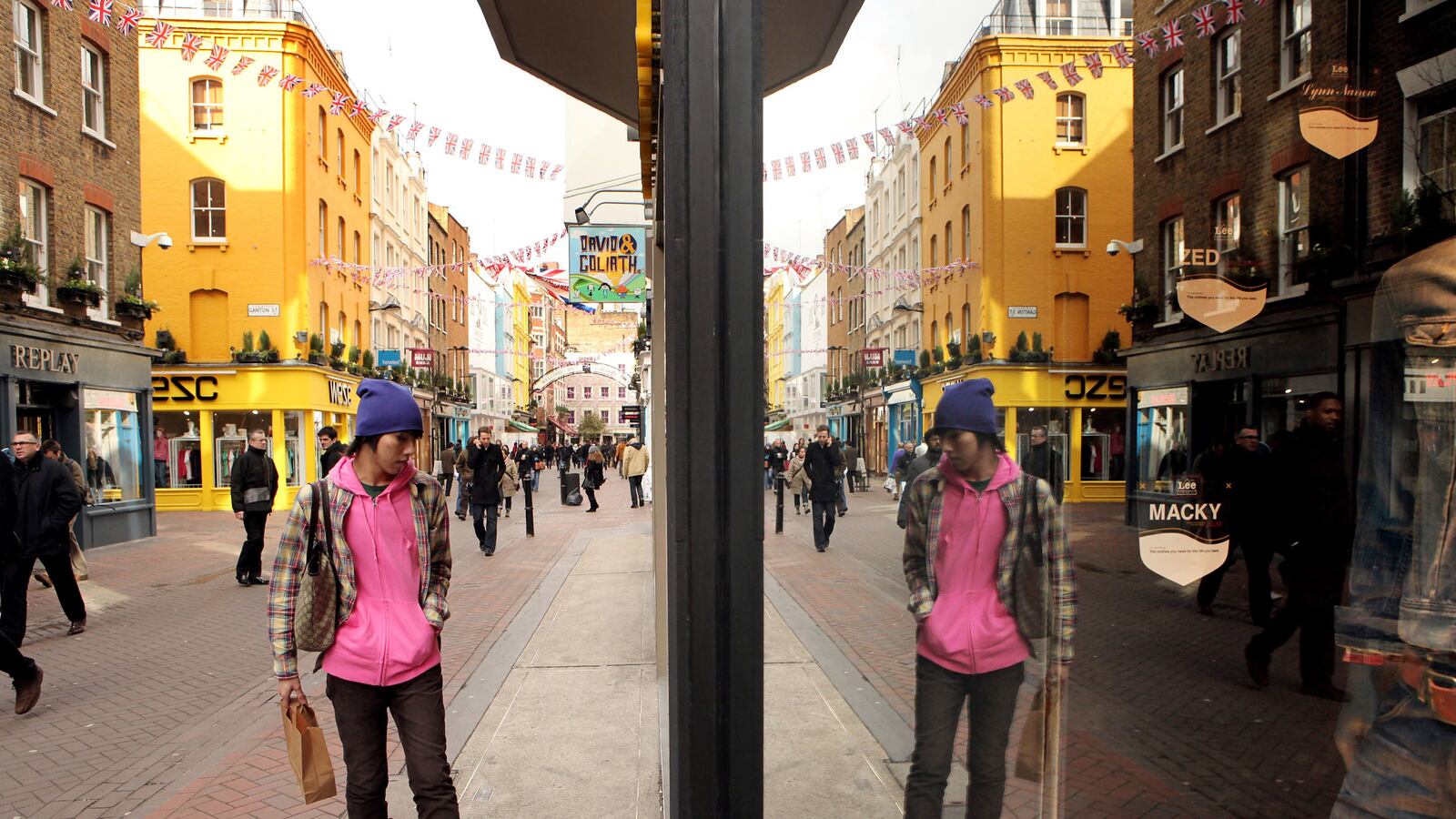Joel Kotkin is at it again.

America’s leading cheerleader for suburban sprawl likes to tell a story about how cities are dying and the suburbs are our future; about how ideas and knowledge don’t matter because America’s economic future revolves around “the Material Boys” (a telling phrase) of extraction, energy, and manufacturing; and how the sprawling cities and suburbs of the Sunbelt and the mountain states—not “hip” cities like New York and San Francisco—are the nation’s present and future economic centers. It’s just the story that his readers at Forbes and his consulting clients like the US Chamber of Commerce want to hear.
Kotkin needs a foil for his vitriol and his backward-looking sensibilities, so once again, on Wednesday on The Daily Beast, he’s enlisted me, arguing that I’ve “conceded” that the urban creative classes have only a limited ability to spur growth. There’s nothing new here: he’s been doing this for a long time—ever since I first published The Rise of the Creative Class way back in 2002.
Kotkin likes to distract people and play to class and other prejudices with inflammatory language about “hip and cool” places versus suburbs and young sophistos, trendoids, and gays versus real families. It’s interesting, in that context, to note that his recent report on “post-familialism” was supported by the right-wing philanthropist Howard Ahmanson. Kotkin’s report credits Ahmanson as a “philanthropist,” but Salon dubs him “the avenging angel of the religious right,” a large funder of antigay and anti-evolution groups and causes. I firmly reject such divisiveness. I’ve argued that a key to urban prosperity is not investments in convention centers, stadiums, casinos or arts complexes, or even coffee shops for that matter, but being open to diversity and difference—having low barriers to entry to people of every sort, young and old, American and foreign-born, gay and straight, married and single, families with kids and without. As Jane Jacobs said a long time ago, truly great cities are federations of neighborhoods that are made up of all kinds of people.
This is what we actually know about cities and economic development—not just from me but from the broad field of urban and regional development.
First of all, it is well known that skills, knowledge, and creativity power economic growth; there is a wide consensus on that. While real economists may quibble on whether knowledge or educational attainment (conventional human capital) or occupation and class (creative class theory) provide better measures of skills, everyone save for the contrarian Kotkin agrees that they are key to the economic growth of cities, regions, states, and nations. I just wrote a long post for Atlantic Cities on this subject, which, not coincidentally, addresses Kotkin’s recent report for The Manhattan Institute on “America’s Growth Corridors.”
Second, everyone who actually studies the subject—save Kotkin—agrees that cities and density spur economic growth. There is an enormous academic literature on this. Denser cities grow faster for reasons that Jane Jacobs, Robert Lucas, Edward Glaeser, and I have identified. When skilled people cluster, they become more productive. Their ideas mate, combining and recombining to generate the innovations that power growth. There is a very fruitful debate about which kinds of density are optimal—i.e. stacked density or integrated and mixed use density a la Jane Jacobs—but, again, everyone seems to agree that denser cities and suburbs, denser metros and regions, add to growth. Study after study, not just in the United States but across the nations of the world, has found close associations between the level of urbanization and overall economic development. Denser places with bigger cities are, to put it simply, richer.
Third, Kotkin misleads readers when he writes I’ve “conceded.” What hogwash. I’ve long been aware of the inequality that is a byproduct of the unvarnished creative knowledge economy and I’ve written about it extensively. Going all the way back to The Rise of the Creative Class, I zeroed in on the “widening income gaps and growing stratification that define our social life.”
“City-regions that rank highest in terms of creative economic strength also rank highest in income inequality,” I wrote in The Washington Monthly a decade ago, in March 2003, based on a measure of metro wage inequality developed by my colleague Kevin Stolarick. “The issue isn’t simply one of social justice or equitable distribution of rewards,” I added. “It is a matter of functional inequality—and creative waste. Seventy percent of the workforce does not have the opportunity to do valuable creative work, as the favored 30 percent does. We are not close to hitting on all cylinders.”
Back in 2005, my Atlantic article “The World Is Spiky” showed how skills and prosperity tend to concentrate in a relative handful of places, and not just in U.S. cities, but around the world. I pointed out that we cannot afford to cut down the innovative peaks (the great urban clusters) that power global economic development, but must lift up the people and places that the knowledge economy is leaving behind.
The smoking gun Kotkin latches onto in The Daily Beast is not from his own research, or even from that of some of my other critics. Rather, he seizes on research on the winners and losers in America’s new skill-driven economic geography that I undertook with my Martin Prosperity Institute colleague, urban economist Charlotta Mellander. That research and the essay in Atlantic Cities that introduced it took aim at the unvarnished “trickle-down” approach to urban economics favored by some students of Silicon Valley, which asserts that everyone benefits when skills go up. We examined the distributional effects of skill and creativity-based growth by looking at the wages and housing costs borne by high-skill and low-skill occupations—the creative class vs. the working and service classes. This is something that lots of people (not Kotkin, mainly my critics on the left) like to make assertions about, but on which there was little if any detailed empirical research. Here is what we found:
• First, a high share of skills, creativity, and knowledge do lift the wages of every class or group of workers—creative, service, and blue collar alike.
• Second, every group does better in bigger, denser cities—wages are higher overall and for each of the classes.
• But third (and here’s the rub), the picture is different when housing costs are taken into account. Housing costs are much higher in bigger, denser, more affluent cities—as Ryan Avent and Matt Yglesias have also noticed—because they lack sufficient supply to meet demand. Creative-class wages are high enough to make up for the higher housing costs, but not working- and service-class wages. Though their wage gains are real, they are not enough to cover their higher housing costs.
This is a key issue facing our cities and nation as a whole, as rising inequality and a jobless recovery make clear. This is not something I take lightly: My ongoing series on America’s class divided cities examines this down to the level of census tracts for 10 or so of the nation’s largest metros. It is not a simple issue, but one that is multifaceted and complex; it requires real research and nuanced understanding to get to the nub of it.
So where does that leave us? If we know that the skills, knowledge, and creativity that power economic growth does not lift all boats, what do we do? Stop investing in skills? Stop the flow of people and jobs back to the urban core—which has not only made many cities safer and better places, but helped increase productivity and innovation for the nation as a whole? Encourage people to tear up more of the environment as they build ever-more-sprawling suburbs?
Of course not. We need to leverage density, skill, and knowledge to propel further innovation, economic growth and development (lord knows our economy needs it), and at the same time we have to build new institutions, new strategies, and a new urban social compact to improve the lot of those at the bottom.
That new social compact must address two important issues. One, it must work to lift the wages of those who toil in low-wage service and working-class jobs by harnessing more of their skills. My own research shows that when cognitive and social skills are added to those jobs it increases their wages, at a rate even greater than when they are added to knowledge work. And second, this urban social compact must address the other side of the coin, making housing more affordable by increasing density, and making urban centers more accessible by improving transit. There is a lot that cities can and must do to improve the lot of the 66 percent who aren’t reaping the full gains of the creative age. This report from Manhattan Borough President Scott Stringer (whom I worked with) outlines some strategies for extending New York’s knowledge and tech boom to a much broader strata of workers and residents. It’s just a beginning.
Cities are back, as much as Joel Kotkin wants to deny it. They have turned the corner and are growing and flourishing again. People with skill, knowledge, and creativity, entrepreneurial businesses, and small shops are returning to places that were once given up for lost. Our suburbs are being transformed bit by bit into more walkable, denser mixed-use places. A new urban revolution is upon us, driven in large part by the returns to density, skills, and creativity.
As in all economic transformations, the invisible hand of the market can only take us so far. The rest is up to us. This is not a time to complain about or belittle this shift, or, as with Kotkin, to pretend that it is not even taking place. We need to build the new institutions and the new social compact that can harness its power and extend its benefits to everyone. And there’s reason for optimism here, even in the face of all the undeniable inequities and problems we have, because the logic of history is pointing in a positive direction.
Our future economic development no longer turns on pumping resources mindlessly out of the ground or tearing up the environment to build houses on the suburban periphery. Real economic growth and development turns on the development of the full talents and capabilities of all our workers in high-tech, knowledge and creative fields, and in factories, farms, and services. And the places that are best suited to that task are our dense, innovative cities—our greatest innovation of all.
Enough already with this tired and divisive debate about families versus hipsters, cities versus suburbs. We know that cities and skills power growth and we know that we’re facing real divides and real inequalities. Let’s get on with the critical task of drafting the new social compact that our urban age requires. Now that’s a debate worth having.






